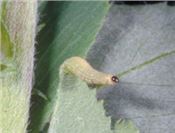Alfalfa Weevil And Insecticide Resistance
DR. RIC BESSIN
PRINCETON, KY.
This past week, I received a report of high levels of alfalfa weevil larvae following an insecticide application. The producer was concerned that the insecticide he was using was not effective. I visited with the grower and collected several hundred larvae from one of the affected fields for a ‘quick and dirty’ laboratory bioassay.
The bioassay involved dipping untreated alfalfa stems in a 10 percent spray solution based on 15 gallons of finished spray per acre, shaking the excess moisture off, air-drying the stems, then placing the stems in petri dishes with 10 larvae for 24 hours. I evaluated the larvae against four insecticides at maximum strength and an untreated check.
The insecticides were from four different modes of action groups (MOA) that are available for use on alfalfa. Below is a table with the results.
The grower indicated that a pyrethroid was applied for alfalfa weevil control and used for about 20 years, so the results in the table are not surprising considering the long use of that MOA. The other modes of action worked well, but the larvae were tolerant to the pyrethroid.
The message here is that if we over-use one MOA, pests may have the ability to adapt to tolerate that MOA. ∆
DR. RIC BESSIN: Entomology Extension Specialist, University of Kentucky

Figure 1. Alfalfa weevil is an early-season pest with one generation per year